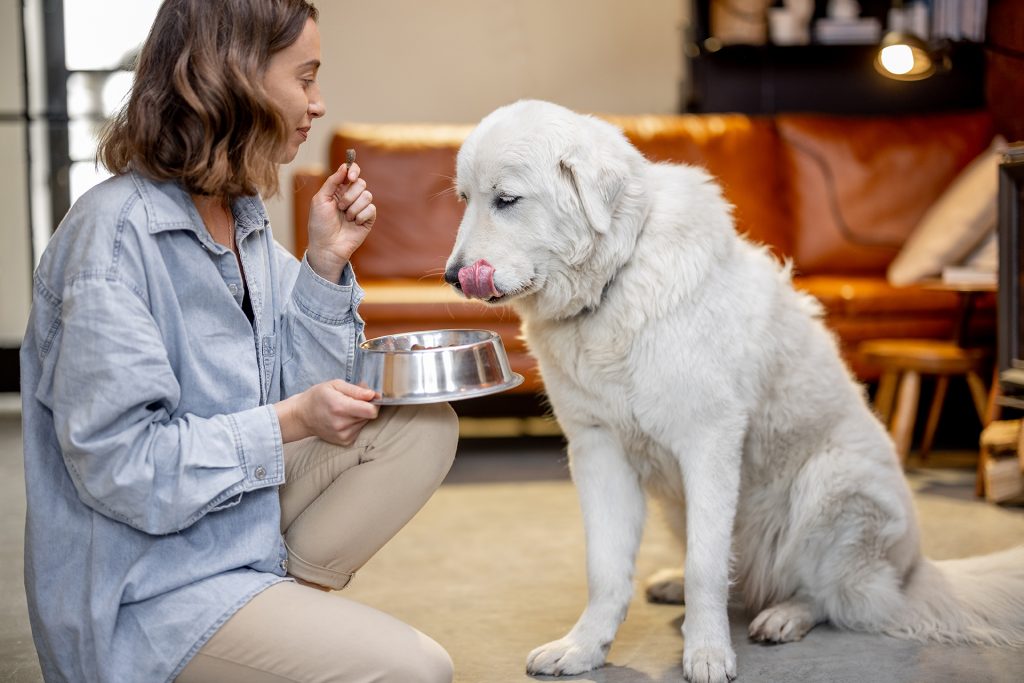Our canine companions whirl through stages, each with its unique rhythm and nutritional needs. From the tender age of puppyhood through the vigorous years of adulthood to the serene pace of their golden years, what we pour into their bowls is more than mere sustenance; it’s a lifeline tailored to the beat of their growth, activity, and age.
Puppyhood: A Time of Rapid Growth
In the first act of their lives, puppies are bundles of energy and rapid development, requiring a diet that fuels both. Milk, the initial elixir of life, soon gives way to more complex diets rich in protein, fats, and carbohydrates. These nutrients are the building blocks for their growing bodies, supporting the development of muscles, bones, and fur. Unlike their adult counterparts, puppies benefit from multiple meals throughout the day, a testament to their burgeoning energy needs and developmental demands.
The age at which a dog is considered a puppy can vary slightly depending on factors such as breed and size. Generally, puppies are considered to be in their infancy stage from birth until they reach around one year of age. However, this timeline can be adjusted based on the specific needs and development of the individual dog. Larger breeds, for example, may be considered puppies for a longer period, sometimes up to 18 months or even two years, due to their slower growth and maturation rate compared to smaller breeds. Owners need to consult with their veterinarian to determine the appropriate milestones and nutritional requirements for their puppy based on factors such as breed, size, and overall health.
Adulthood: The Prime of Life
As dogs enter adulthood, their diet evolves to meet a different set of needs. The focus shifts to maintaining their health and vitality through balanced nutrition. Proteins like beef, chicken, boiled eggs, and milk become staples, offering the essential amino acids and nutrients required to sustain their energy and health. Yet, the simplicity of this diet belies the complexity of getting the balance just right—too much or too little can tip the scales of health.
The Golden Years: A Gentle Approach
Elderly dogs, with their slower pace and serene days, require a diet that reflects their reduced energy expenditure and delicate health. The protein remains a cornerstone of their diet but in a form that’s easily digestible and less taxing on their aging, renal systems. Overburdening their kidneys with excessive protein can lead to health issues, a stark reminder that with age, less is often more. Hydration takes center stage, with a plentiful supply of water to support their vital functions.
Determining when a dog is considered elderly can vary based on several factors, including the individual dog’s breed, size, and overall health. However, as a general guideline, dogs are often considered elderly or seniors when they reach around 7 to 10 years of age. Larger breeds tend to have shorter lifespans and may be considered seniors at the younger end of this range, while smaller breeds and mixed-breed dogs may be considered seniors closer to the older end of the range.
It’s essential for dog owners to be aware of signs of aging and to adjust their care routines accordingly as their dog enters their senior years. This may include more frequent veterinary check-ups, adjustments to their diet and exercise regimen, and monitoring for age-related health issues such as arthritis, dental problems, and cognitive decline. Consulting with a veterinarian can help provide tailored guidance on caring for an elderly dog and ensuring their golden years are comfortable and fulfilling.
Special Stages: Pregnancy and Nursing
Female dogs navigating the waters of pregnancy and nursing are in a class of their own, requiring diets that support not just their health but that of their offspring. Overfeeding is a pitfall to avoid, especially in pregnancy, where discomfort and health risks loom. Instead, the focus shifts to balanced nutrition—rich in vitamins, minerals, and adequate calcium—to ensure the health of the mother and the optimal development of her puppies. This careful calibration ensures that the nursing mother can provide for her puppies without depleting her own reserves, setting the stage for the next generation to thrive.
In the grand tapestry of a dog’s life, nutrition is the thread that weaves through each stage, a constant companion in their journey. Understanding and adapting to their changing needs is not just an act of care but a celebration of their lives, ensuring that every stage is as vibrant and healthy as possible. As we stand by our furry friends, let us remember that in their world, we are the guardians of their health through every leap, bound, and tender step.



